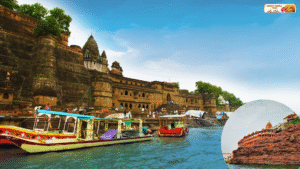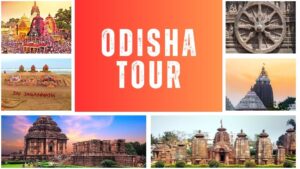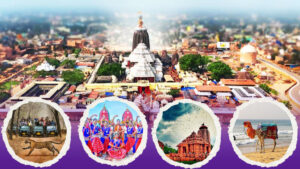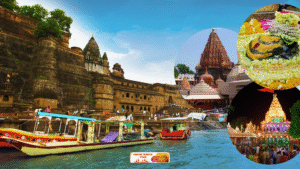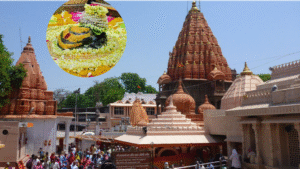Adi Kailash Yatra for Beginners: Trekking Routes, Permits, and Essentials
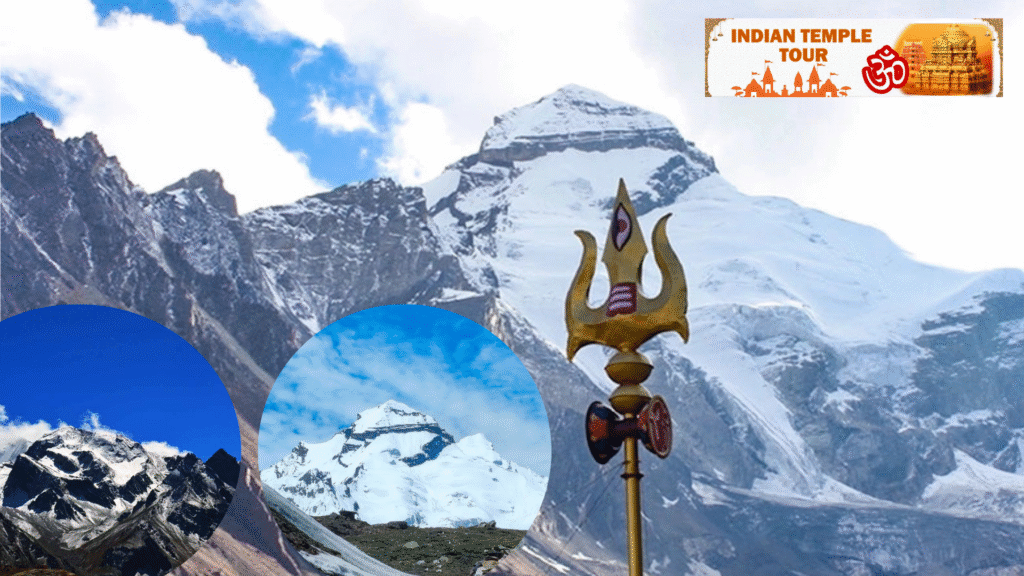
The Adi Kailash Yatra, also known as Chhota Kailash Yatra, is a sacred pilgrimage and trekking adventure in Uttarakhand’s Kumaon region, revered as an abode of Lord Shiva. Nestled in the Himalayas near the Indo-Tibet and Indo-Nepal borders, this journey combines spiritual significance with stunning landscapes, including the iconic Om Parvat and Parvati Sarovar. For beginners, proper planning is key to a safe and fulfilling experience. This guide covers trekking routes, permit requirements, and essential items to help you prepare.
Trekking Routes
The Adi Kailash Yatra spans approximately 95-200 km round trip, depending on the route and mode of travel (trekking or vehicle-assisted). The journey typically starts from Dharchula, with Jolingkong as the base camp for Adi Kailash. Here are two primary routes suitable for beginners:
Route 1: Dharchula to Adi Kailash via Gunji and Kuti
- Starting Point: Dharchula (Pithoragarh district, Uttarakhand)
- Key Stops: Gunji, Kalapani, Nabidhang (Om Parvat), Kuti, Jolingkong
- Distance: ~95 km round trip (with significant driving and 2-7 km trekking segments)
- Duration: 6-10 days, including travel and acclimatization
- Description: This route is beginner-friendly due to recent road developments by the Border Roads Organisation, reducing trekking distances. From Dharchula, travel by 4×4 vehicles to Gunji (7-8 hours, following the Kali River). Visit Om Parvat at Nabidhang for its sacred “Om” snow formation. Continue to Kuti village, known for its Pandav Fort and Kunti Parvat, then reach Jolingkong for Adi Kailash and Parvati Sarovar. The route offers scenic views of the Annapurna and Kumaon Himalayas, lush forests, and villages like Budhi and Nabi.
- Highlights: Kali Temple at Kalapani, Gauri Kund, and cultural interactions in remote villages.
- Difficulty: Moderate, with short trekking segments suitable for fit beginners with proper acclimatization.
Route 2: Dharchula to Adi Kailash via Darma Valley
- Starting Point: Dharchula
- Key Stops: Gala Village, Budhi, Jolingkong
- Distance: ~95 km round trip
- Duration: 15-18 days for full trekking, shorter with vehicle support
- Description: This route involves more trekking, passing through the Darma Valley and Kali River Valley. Start with a drive from Dharchula to Gala Village (2,375 m), then trek to Budhi (2,740 m). Proceed to Jolingkong (4,300 m) for Adi Kailash views. This route is more challenging due to high-altitude trekking and steep paths but offers panoramic views of Nanda Devi and Panchachuli peaks. It’s ideal for beginners with some trekking experience.
- Highlights: Narayan Ashram, alpine meadows, and waterfalls.
- Difficulty: Moderate to high, requiring physical fitness and acclimatization.
Best Time to Visit
- Summer (May-June): Pleasant weather (10°C to 20°C), clear skies, and minimal landslide risk make this ideal for beginners.
- Autumn (September-October): Stable weather (10°C to 20°C) with stunning foliage views. Avoid monsoon season (July-August) due to landslides and winter (November-April) due to snow and extreme cold (0°C to -7°C).
Permits and Documentation
Adi Kailash is near the Indo-Tibet border, requiring an Inner Line Permit (ILP) for Indian citizens and special permissions for foreign nationals. Here’s how to obtain permits:
Permit Process
- Visit the SDM Office: Apply at the Sub-Divisional Magistrate’s office in Dharchula or Pithoragarh.
- Submit Documents:
- Valid ID (Aadhaar, passport, voter ID, or driving license)
- 2-3 passport-sized photographs
- Medical fitness certificate from an MBBS doctor
- Notarized affidavit on Rs 30 stamp paper
- Police verification form (if no passport)
- Covid-19 vaccination certificate (check current requirements)
- Fill Application Form: Provide details like purpose of visit, duration, and group size.
- Await Approval: Processing may take a few days; collect the ILP upon approval.
- Carry Permit: Keep a copy during the trek for verification.
Additional Notes
- Foreign Nationals: Require special permission from the Ministry of Home Affairs and FRRO. Currently, the yatra is primarily open to Indian citizens.
- Cost: ILP fees range from ₹300-400. Tour packages (₹25,000-33,000) often include permit assistance.
- Registration: Register with local authorities or tour operators for safety.
Essentials to Pack
Proper gear is crucial for the high-altitude, rugged terrain of Adi Kailash. Here’s a checklist for beginners:
Clothing
- Layered Clothing: Woollens, fleece, windproof jacket, and waterproof poncho to handle temperature swings (10°C to -7°C).
- Footwear: Waterproof trekking boots, warm slippers, and camp shoes for comfort.
- Accessories: Beanie, gloves, sunglasses, and wind mask for protection against cold and UV rays.
Trekking Gear
- Backpack/Rucksack: Lightweight, sturdy (30-50L) to carry essentials.
- Trekking Poles: For stability on steep paths.
- Sleeping Bag: High-quality, suitable for sub-zero temperatures.
- Wet Bag: For storing dirty or wet clothes.
Health and Safety
- First Aid Kit: Include bandages, antiseptics, and altitude sickness medication (e.g., Diamox, after consulting a doctor).
- Hydration: Water bottles (3-4L daily) to stay hydrated at high altitudes.
- High-Calorie Snacks: Nuts, energy bars, and candies for quick energy.
- Medical Certificate: Mandatory for permit approval; consult a doctor for high-altitude risks.
Other Essentials
- Power Bank: Limited charging points; carry for emergencies.
- Toiletries: Hygiene wipes, toilet paper, sunscreen, and lip balm.
- Cash: ATMs are scarce beyond Dharchula.
- ID Copies: Extra copies of permits and IDs for checkpoints.
Tips for Beginners
- Physical Preparation: Train with cardio and strength exercises 2-3 months prior to build stamina. Practice hiking to prepare for high altitudes (up to 6,191 m).
- Acclimatization: Plan rest days (e.g., in Dharchula or Gunji) to adjust to low oxygen levels and prevent altitude sickness.
- Guides and Porters: Highly recommended for navigation and carrying gear, especially for beginners.
- Respect Local Culture: Follow local customs, avoid littering, and engage respectfully with communities.
- Travel with Operators: Book with reputable agencies like Trip To Temples or Nomad Adventures for permits, transport, and guided tours.
- Health Precautions: Get vaccinated (Hepatitis A/B, Typhoid, Tetanus) and carry medications for altitude sickness.
Accommodation and Food
- Accommodation: Basic options like tents, guesthouses, homestays, or ashrams are available in Dharchula, Gunji, and Kuti. Homestays offer cultural immersion. Book in advance during peak seasons (May-June, September-October).
- Food: Tour operators provide pure vegetarian meals (no onion/garlic) at resthouses. Carry snacks, as markets are limited beyond Dharchula. Fasting is not advised due to high-altitude demands.
How to Reach Dharchula
- By Air: Fly to Pantnagar Airport (450 km from Dharchula), then take a taxi or bus.
- By Train: Reach Kathgodam Railway Station (410 km from Dharchula), then travel by taxi or bus.
- By Road: Well-connected via NH9 from Delhi, Haldwani, or Pithoragarh. Expect 10-12 hours from Haldwani.
- Local Transport: Shared cabs or 4×4 vehicles (e.g., Bolero) for rough roads beyond Dharchula.
Spiritual and Cultural Highlights
- Adi Kailash: Revered as Lord Shiva’s abode, offering self-purification and peace.
- Om Parvat: Features a natural “Om” snow formation, a sacred symbol.
- Parvati Sarovar/Gauri Kund: A glacial lake at 5,600 m, linked to Goddess Parvati’s meditation.
- Kali Temple and Ved Vyas Gufa: Sacred sites in Kalapani with mythological significance.
- Kuti Village: Home to Pandav Fort and Kunti Parvat, tied to Mahabharata legends.
Conclusion
The Adi Kailash Yatra is a transformative journey blending spirituality and adventure. Beginners should focus on physical preparation, securing permits, and packing essentials for high-altitude trekking. Opt for the Dharchula-Gunji-Kuti route for a shorter, vehicle-assisted trek, or the Darma Valley route for a more immersive experience. With careful planning and respect for local customs, this pilgrimage to the abode of Lord Shiva will leave you with lasting memories of the Himalayas’ divine beauty.
For the latest updates and package details, contact tour operators like Indian Temple Tour (+91-9870240354) or Nomad Adventures (+91-9990816600).


